Wholesale Ted vs Oberlo: Print-On-Demand or Dropshipping
Want to start an online store? Torn between print-on-demand and dropshipping? Watch on. In this video, Wholesale Ted's Sarah Chrisp joins us as we put the ultimate debate to the test–just which ecommerce model is better?
Jessica: You know you have what it takes to be an entrepreneur. But you're not sure what to sell and you've heard about different business models that can solve for that problem. You've heard about something called dropshipping and you've also heard about something called print-on-demand.
Both business models allow you to run an online store without carrying any inventory, which means you don't have to spend thousands of dollars upfront on products that you're not even sure you can sell yet.
That's great. But how do you decide between dropshipping and print-on-demand? Today, you're gonna learn the pros and cons of each through a little healthy debate. I invited Sarah of Wholesale Ted to join me in a little verbal sparring about which ecommerce model is better for beginners.
You're gonna learn about the differences between print-on-demand and dropshipping. Sarah is gonna talk about print-on-demand and I'm gonna talk about dropshipping. And we're going to go over things like profit potential, shipping times, product selection, and more.
This is a Wholesale Ted and Oberlo collaboration you don't want to miss, so grab a seat and let's get started. You're already sitting down. This is a collaboration you don't wanna miss.



The Wholesale Ted vs Oberlo Debate in a Nutshell
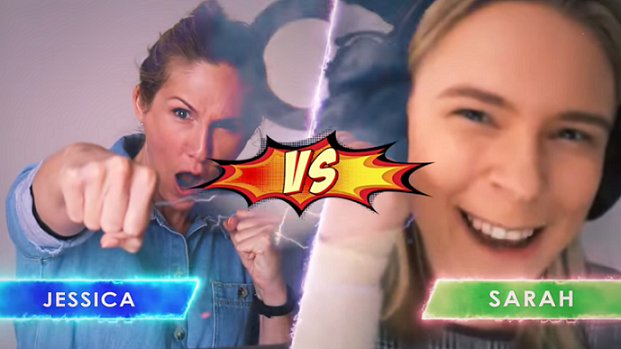
Full disclosure, Sarah and I have experienced running both print-on-demand and dropshipping businesses. However, I lean more towards dropshipping these days and Sarah is in the print-on-demand corner.
→ Click Here to Launch Your Online Business with Shopify
While I love Sarah and her YouTube channel, Wholesale Ted, today, she's the competition. Just joking. We're actually on the same team here. We're on the making-money-with-your-own-business team. But we want to have a friendly debate so that you can see the differences between print-on-demand and dropshipping and decide which business model is right for you.
Before we begin the debate, let's meet my worthy opponent, Sarah of Wholesale Ted.
Sarah: Thank you, Jessica. Yes, I promise to be a worthy opponent. Hello, everybody. My name is Sarah, and you can find me over at my channel, Wholesale Ted, where I give excellent advice for online business owners that are starting, growing, and scaling online businesses, especially ecommerce businesses.
Besides Wholesale Ted, I also currently own and run a six-figure ecommerce business and, yes, my main product sourcing method right now is print-on-demand. And, Jessica, if I had to recommend one of my videos for people that want to learn more about how print-on-demand works, it would be the case study video on the Wholesale Ted channel, where I take people behind the scenes of my six-figure print-on-demand clothing store.
Jessica: I love that video and I do recommend it. However, we've got to talk about your thumb. What happened there? Was that a previous boxing match or what?
Sarah: I wish. Wouldn't that be such a more interesting story? Instead, it was literally just me getting off my couch. I put my hands on the couch and I pulled myself up and then, boom, this happened.
Jessica: It's one of the dangers of the work-from-home lifestyle, is you've got all these hidden dangers at home.
Sarah: Sure.
Jessica: It's great to finally have you on our channel. I've been a guest on Wholesale Ted. We had a lot of fun filming together. And if you haven't had a chance to watch that video, you definitely should.
If you've watched a few videos on our Oberlo YouTube channel, you probably already know what dropshipping is. But I'll just start off by explaining dropshipping in the littlest nutshell, and then Sarah will do the same for print-on-demand.
Oberlo on Dropshipping
Dropshipping is an ecommerce business model that allows you, the entrepreneur, to sell potentially millions of different products without ever touching them.
What you do is you start an online store with Shopify, and then you go to something called the Shopify App Store. That's where you can find and install a dropshipping app, like Oberlo, for free.
With Oberlo, you can browse those millions of products available from suppliers on a site called AliExpress, and then you use Oberlo to import those products to your store in just a few clicks.
From there, you can start selling them. So, when your customer comes to your store and places an order, you go to AliExpress via Oberlo, and you tell that supplier to ship that product directly to the customer.
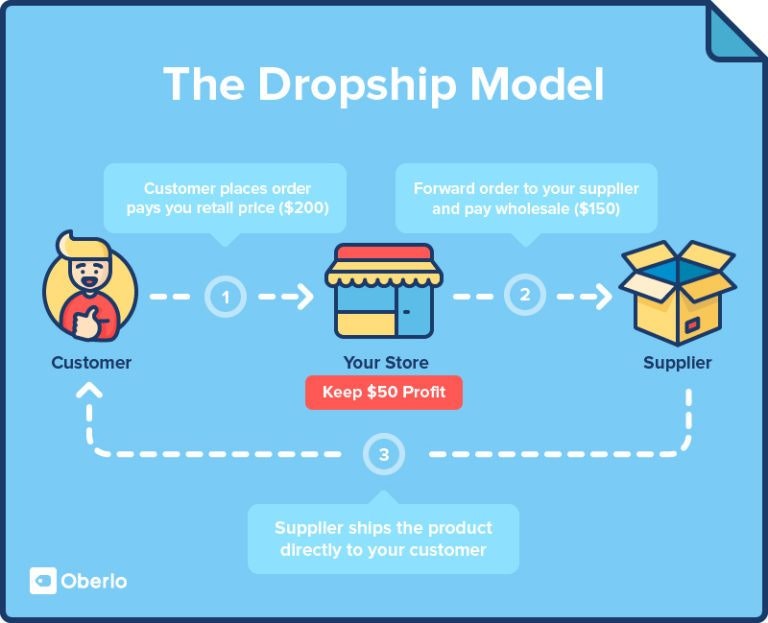
So, you never have to touch that product, although you do do the work of marketing the products, finding the customers, and then you get the benefit of making those sales.
That's dropshipping in a nutshell. Sarah, can you give us a little bit of an idea of what print-on-demand is?
Wholesale Ted on Print-on-Demand
Sarah: Yeah. Print-on-demand is actually quite similar in many respects to dropshipping. You see their print-on-demand app site Printify that will let you upload a piece of artwork to the website. They would then digitally place that art onto blank products, such as a blank T-shirt, or a blank hoodie, or a blank mug, and essentially, they'll create a digital copy of that product for you.
Let's say that you create your own version of one of their T-shirts by uploading artwork onto it, Printify will create a digital copy of it for you, and then you can place it for sale in your store.
And then when a customer comes and buys it from you, Printify would charge the credit card or debit card that you have on file with them the base cost of the T-shirt.
The T-shirt I usually recommend for beginners starts at $7.91, with a free Printify account.
Printify also would charge shipping, which for T-shirts is usually $4, although it does vary from product to product, and then you get to keep the rest of the money for yourself. And then Printify's partner factory will then print the design onto the T-shirt and then ship it out to the customer for you automatically.
And because they have integrations into ecommerce apps like Shopify, they process the orders for you, so it's literally hands-off, which is really great for someone like me right now. And a customer makes the order, and Printify just automatically sees it, and gets the T-shirt made and then shipped. You do literally nothing throughout that whole process. To me, I consider it a very passive source of income.
And just like with dropshipping, it is “blind,” which means then that the customer is never told that it's coming from a third party factory. And print-on-demand apps often do something pretty cool. They'll let you put your logo on the shipping label, which adds a nice touch of branding.
And just like with dropshipping, you never have to pay for the products until you sell them. So it also means that it requires a lot less start-up money than traditional forms of product sourcing, such as wholesale buying in bulk. And, in fact, they're actually so similar that I've seen a lot of print-on-demand companies refer to what they do as dropshipping, but I personally do not because they are very different.
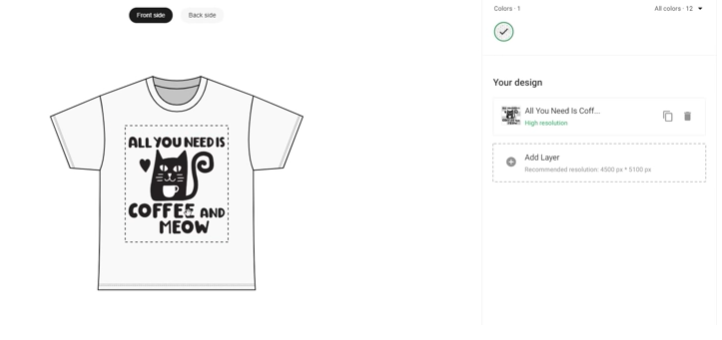
Jessica: Yeah, dropshipping and print-on-demand are different. They share a lot of similarities, but it's really important for entrepreneurs who are considering both models to understand the pros and cons of each. That's why I invited you on the channel, it's why we're debating today.
Through our debate, hopefully, the entrepreneurs who are watching will be able to determine which business model is right for them.
What You Need to Start
Wholesale Ted on Print-on-Demand
Let's get started with our first round, with our first question, which is, how easy is it to get started? And let's compare print-on-demand and dropshipping in terms of how easy it is for a complete beginner to get that business model started. Sarah, I'll let you go first with print-on-demand.
Sarah: Yeah. This is definitely something where print-on-demand differs drastically from dropshipping, and why I feel very iffy about calling them the same thing. To get started with print-on-demand, you'll need three things.
Number one, you'll need to create or buy art to sell on your products, and this is where it gets very different from dropshipping 'cause, think about it, if you're dropshipping T-shirts, those T-shirts have already been designed and produced by your supplier, they're ready for you to dropship and sell.
But with print-on-demand, the only thing that your supply is providing you with is a blank T-shirt. And unfortunately, if you try to sell a blank T-shirt in your store, no one's gonna buy it.
So, to get started with print-on-demand, you will need some form of artwork as a print onto your products.
Now, for me, I usually get my art from a mixture of sources. I have artists that I hire and pay to create art for me, and I sometimes get art from Shutterstock. And I also create my own text-based designs using Canva, and that's usually what I recommend to beginners with no artistic art skills, like myself. If you wanna create your own print-on-demand products without hiring artists, that's a really great option.
Number two, you will need to choose a print-on-demand factory to work with. And probably the easiest way for most beginners to do that right now is with the app, Printify. Printify is a free print-on-demand app that integrates into online stores, such as a Shopify store, and it allows you to easily connect with print-on-demand factories and sell a range of products.
Let's say you wanted to sell the T-shirt that I recommend most beginners start with, the Gildan 5000. Well, Printify has lots of different factories that you can choose to work with. Personally, if most of your customers are in the USA, I recommend Monster Digital.
They're the number one Printify supplier I use, and they just recently returned to fast product turnaround times after getting through the COVID-19 backlog. They've been reliable at shipping out products in five business days or less, and their quality is awesome. My customers do indeed love the products that they make.
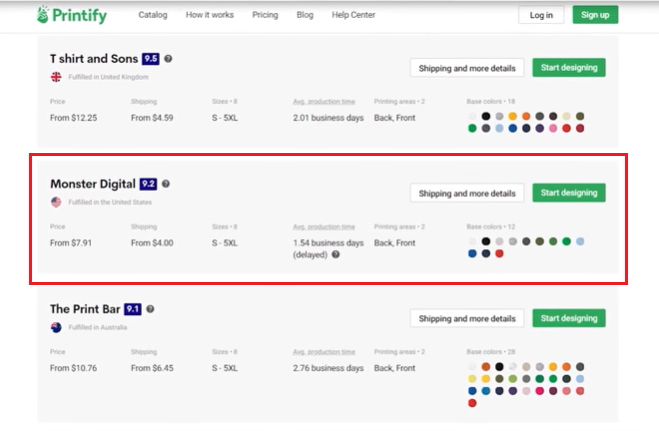
And then number three, you're going to need to choose which products you want to sell. Now, obviously, there are choices that most people will think about, like T-shirts and mugs, but I have a friend, Adrian, who sold over $700,000 of print-on-demand leggings, and one of the top-selling products in a big Etsy print-on-demand store is shower curtains. On Printify, there are over 250 products to choose from, so you've got quite a few options.
Jessica: My first dropshipping story was a leggings store and I definitely didn't sell over $700,000 worth of leggings. That's pretty incredible.
Sarah: But if you did it today, I'm sure that your store would be far more successful.
Oberlo on Dropshipping
Jessica: Oh, well, maybe. But I love how you neatly organized your answers into these numbered lists. You're really throwing some debate team captain expertise my way and it's a little intimidating.
But I think I can go toe-to-toe with you on this topic because getting started with dropshipping is really, really simple.
Unlike print-on-demand, you don't need to worry about creating or buying art before you start selling products.
Instead, you can just go to AliExpress and literally pick from millions of products that are all ready to sell right off the shelf. What's really cool about AliExpress, too, is you can find products in every niche.
You were talking about print-on-demand being T-shirts and coffee mugs, and I know there are a lot of products, but in AliExpress and with dropshipping, you can sell anything from cycling glasses, to mechanical keyboards, to kitchen gadgets, and the list goes on.
However, while that part is simple, it does take a little extra work for entrepreneurs to figure out what to sell. Because you have all that choice, you really have to put in a lot of research as to what products are actually going to sell.
This isn't so hard if you know where to look because on YouTube, there are lots of YouTubers, including Oberlo, that make regular product suggestion videos. And these products are researched and presented with multiple marketing angles for you to consider. You can also take a dropshipping course, like Oberlo 101.
And in Oberlo 101, we teach you everything you need to know to start a dropshipping business, including what makes a winning and profitable product.
Sarah, you mentioned suppliers, and that's also a big part of getting started with dropshipping. You do need to find suppliers to work with because they're gonna be responsible for shipping the product to your customer and you wanna make sure they're reliable.
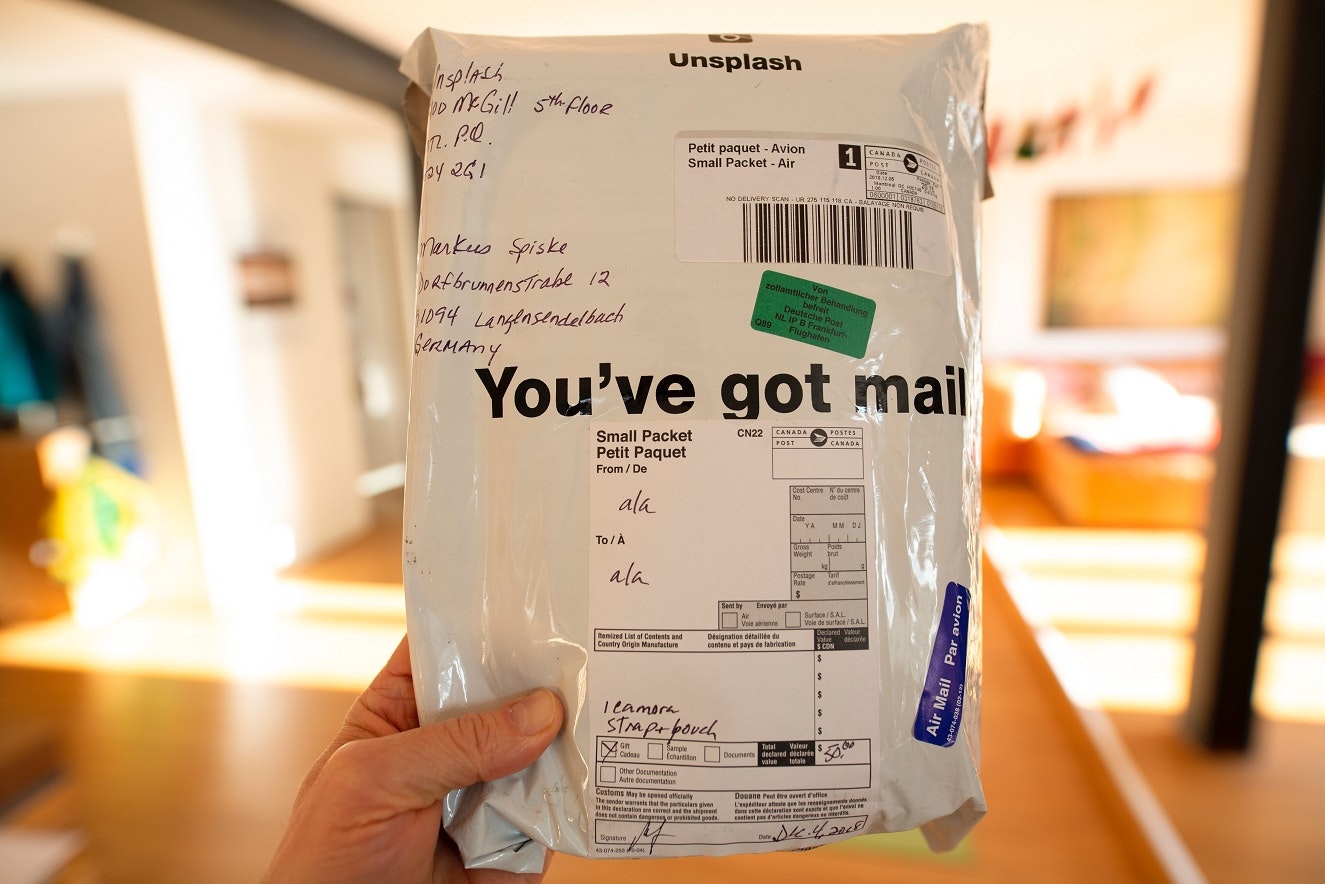
There is a lot of data on AliExpress to help you figure out which suppliers are reliable, but this is also a process that you have to test yourself, you have to order test products. That might take a little bit more research than print-on-demand. But again, the trade-off is that you have so many products.
I think in terms of how easy it is to start, Sarah, I think dropshipping wins this round because you don't have to worry about the art stuff. And so, for beginners, it's just much easier to get started and sell. I'm gonna give dropshipping the points.
Sarah: Fair enough, but there are still more rounds to go.
What to Sell
Wholesale Ted on Print-on-Demand
Jessica: There are. Okay. Round two is all about what to sell. We're gonna compare dropshipping and print-on-demand in terms of what entrepreneurs can actually put in their stores and start selling to customers. Sarah, why don't you kick off the round?
Sarah: All right. With print-on-demand, something that I really love is that, in theory, you can create infinite numbers of products.
For example, if I come to Oberlo and I search for dinosaur T-shirts, yes, you will, admittedly, find quite a few T-shirts to sell. But once I've listed all these T-shirts in my store, that is it, there is no more left to add and sell.
But with print-on-demand, I or my artist could just keep designing new dinosaur artwork and keep making more and more tees.
Our imagination is our only limit. Except that's not quite true because there is one more limitation, and that is you do need to have the legal right to use the artwork. So, I couldn't come in and just take the Jurassic Park logo and sell it on a T-shirt because that would infringe on the copyright and trademark that Universal Pictures have the rights to.
You probably know that you could also argue, is kind of a limit, is that while Printify says that it has 250-plus products, a lot of people would say that that's kind of not true because take a unisex shirt, Printify has 20 different types of unisex T-shirts in its catalog and those all count towards Printify's claim of 250 products.
So, yes, they do have a lot of different products, but it's not quite on the same level, admittedly, as say AliExpress's 500,000-plus product listings.
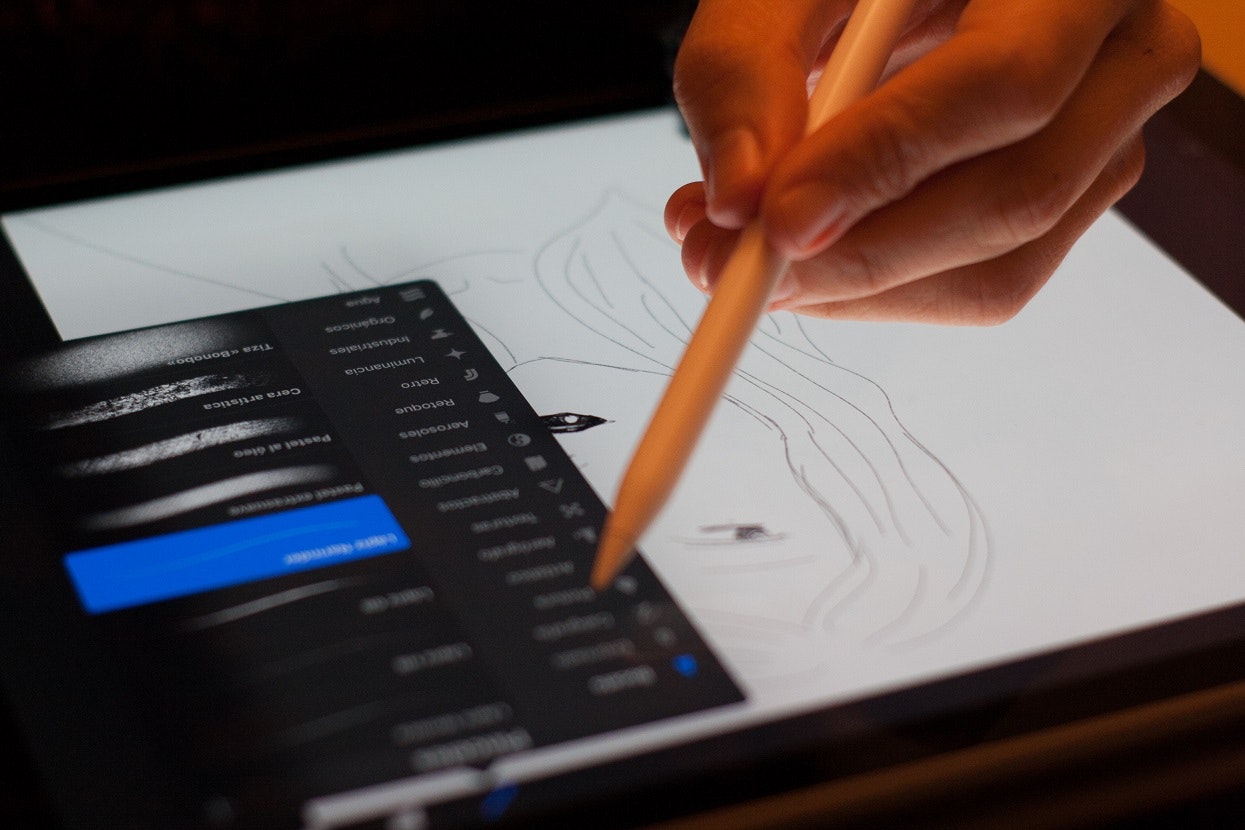
Oberlo on Dropshipping
Jessica: That's exactly what I was going to say. If you consider a T-shirt with one design, a different product from a T-shirt with another design, then, yes, print-on-demand offers infinite products to sell online. And the only limit is the entrepreneur's imagination and art world connections.
But with dropshipping, entrepreneurs have access to half a million products, from novelty slippers to magic sponges, and everything in between.
This has its pros and cons, which I've kind of touched on already. The con is that it can be really hard to know what products to sell when there are so many options. But one pro of dropshipping is that entrepreneurs have a lot of data to work with.
AliExpress is an ecommerce platform, just like Amazon, so while you can find products on there to import and sell, many people also use AliExpress to actually shop. That means that those shoppers are leaving reviews, they're rating suppliers, and they're placing orders for themselves that help rank popular products.
As a dropshipper, you can use this information to your advantage. If you don't know what to sell, you can jump into AliExpress and start looking at which products are selling the most in each category. And from there you can sort products by their star rating, and read reviews to see what real customers think about the products.
That's just data that print-on-demand entrepreneurs don't have.
If you put a unique piece of artwork on a T-shirt, you still have no idea how many of those T-shirts you'll potentially sell. That said, if you're a print-on-demand entrepreneur, you are offering a product that a customer can't get anywhere else. And that is a little bit of a downside of dropshipping. You're selling products that people can still buy on AliExpress, can potentially buy from other dropshippers.
So, for this reason, I think dropshipping and print-on-demand both get a point. While dropshipping offers a wide variety of products to sell, print-on-demand allows for infinite customizations and unique products that entrepreneurs can add to their stores.
Okay. Don't get so comfortable with those ties, Sarah, because we're moving on to round three and this is all about profit potential. This is huge for entrepreneurs. Sarah, let's see what you got.
Profit Potential
Wholesale Ted on Print-on-Demand
Sarah: All right. When it comes to print-on-demand, each product does have its own price and its own profit potential. For example, Printify has a range of different T-shirt brands and styles you can choose from, and each of these, they do have their own prices.
Now, for most beginners wanting to sell T-shirts, I recommend that they start with the cheapest T-shirt just to keep costs low and that's the Gildan 5000 and then they switch to a more premium T-shirt later.
If you choose Monster Digital, their prices per T-shirt start at $7.91 with Monster Digital, and once you've got a successful design, you can then upgrade to Printify's premium subscription. It costs $29.95 a month, but once you have a successful design, it's well worth it because it discounts products by up to 20 percent.
The Gildan 5000, with a premium subscription, costs just $6.05 a T-shirt once you have a premium account. Its shipping is also additional. So in addition to $6.05, Monster Digital also charges $4 per shipping.
So, in total, that would mean that to sell a T-shirt to a customer, it would cost $10.05. So, yes, when you do the maths, items that you sell at print-on-demand are usually more expensive than similar items that you would dropship. So you do have smaller profit margins, I will admit that.
But something that is really cool is that you usually have a higher uptake right for upsell products, which can drastically increase the profit margins. Because you think about it, if the customer really liked the design that they saw on a T-shirt, that means that there's a really good chance that they're like it on other products, such as a sweatshirt.
So this helps you offset the lower profit margins by getting customers to, instead, order multiple products at once by re-using that same design but on different items.
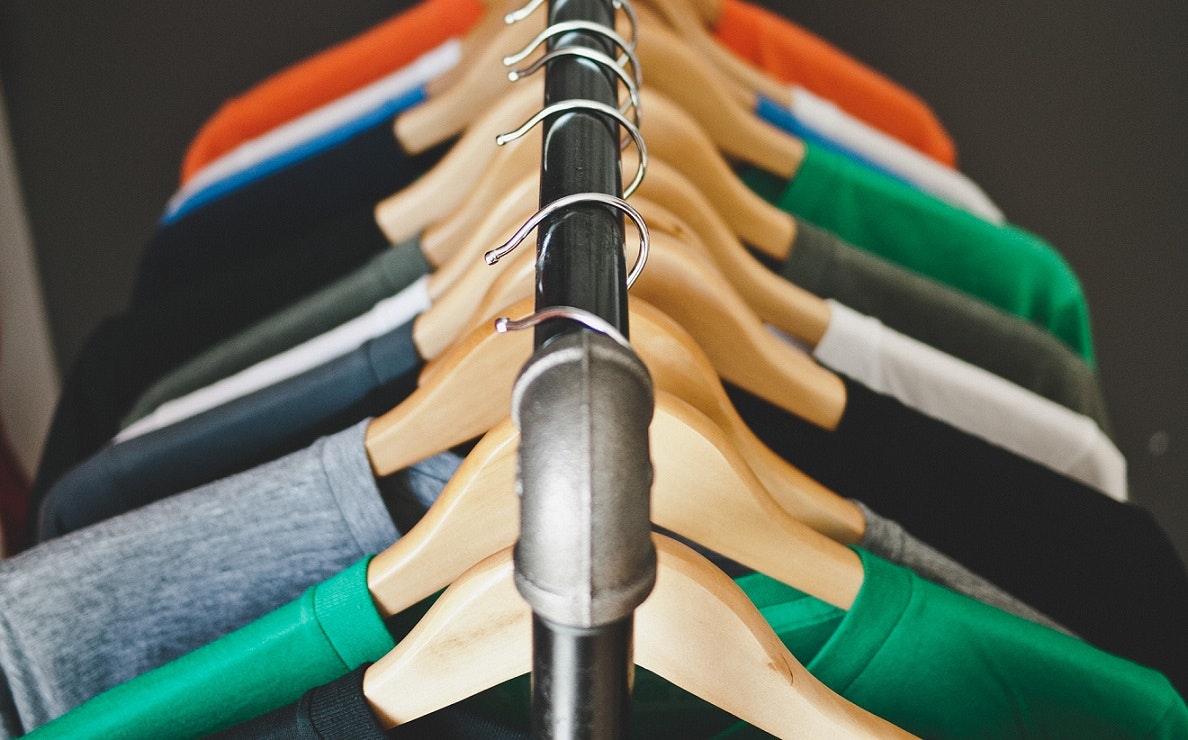
Oberlo on Dropshipping
Jessica: I actually had not thought of that point, Sarah, that you can upsell customers who already like a specific design, and that makes a lot of sense. But one of my issues with print-on-demand is that you're selling products that people have bought before. Not products with that unique design that is still an advantage, but generally people usually have coffee mugs and they've bought T-shirts before.
And when people have bought a product before, they have price expectations. For example, I can't think of anyone who's going to buy a $50 coffee mug and that limits the profit potential. One of the best dropshipping tips is finding a unique product that solves a problem.
Customers have probably never seen that product before, so they don't know how much they should pay for it, and that gives the entrepreneur the freedom to set their own price.
Now, different categories of products allow for different profit margins. Normally, we suggest the entrepreneurs multiply their cost by three to get their average selling price. So, if on AliExpress, a product is $5 plus $1 shipping, that would be $6 multiplied by three, sell it for $18, or just round off to $20, and that's the price that your customer pays you.
However, in categories like the jewelry niche, it's not uncommon to sell jewelry that costs less than $5 and then charge customers more than $30, so there's a lot of profit potential there. That's why I think that, for round three, dropshipping takes the point.
You just have a better chance of selling a product to a customer and not having the customer guess the price, and that lets the entrepreneur set that price and that increases profit margins.
Sarah: All right. But still got more rounds to go.
Jessica: Honestly, Sarah, I'm a little bit afraid of the next round actually because we're filming this debate in the midst of a global pandemic, and that has implications for this next round because around four is all about shipping times.
So, while I get my notes together on this one, Sarah, go ahead and tell me about print-on-demand shipping times.
Shipping Times
Wholesale Ted on Print-on-Demand
Sarah: I will say that print-on-demand shipping times have definitely been impacted by COVID-19 as well although, as you'll see, a bit less. This might be currently my favorite part about print-on-demand and that is because you do get to work with local suppliers.
My favorite Printify partner factory, Monster Digital, they are based in the USA, and their factory is based in Miami, Florida. So when they ship products, they will be shipping them locally with USPS, and they will have local USA ground shipping times, which is usually three to five days.
But, of course, if you live in, say, Germany, like Jessica, and felt more comfortable with selling and marketing to German customers, then you could instead opt to use the German-based print-on-demand partner that Printify has, Textildruck Europa, which I'm sure I'm pronouncing wrong.
But this means that your European and German customers will now have local shipping times, which is also usually three to five business days. But something to keep in mind though is that you still need to allow for the production times, and this is what's been particularly impacted by COVID-19 and the amount of time frame, too.
Now, I checked before filming this and, on average right now, Monster Digital is taking up to five business days to produce my products. Sometimes it's shorter, but it is taking up to five business days right now. So your expected delivery time for your customer would be the production time plus the shipping time.
So, for my customers, that would be five business days for the order to be made and then an additional three to five business days for USPS ground shipping.
That means that they'd usually get their orders within eight to ten business days.

Oberlo on Dropshipping
Jessica: Okay. Yeah, that's a little bit hard for me to respond to. Those print-on-demand shipping times are really good because even in the best of times, dropshipping shipping times are normally between 12 and 25 days.
That's because a lot of AliExpress suppliers are in China. For this reason, shipping times have been a point of contention for dropshippers and potential dropshippers even before they get started. They get scared that no one will buy those products if the shipping times are long. But as I've stated in numerous videos on our channel here, dropshipping shipping times are doable, customers still buy.
Before COVID-19, we would suggest that entrepreneurs use ePacket shipping because that was usually the fastest way for entrepreneurs to get their products from China to customers. That was between 12 and 25 days.
But now, in the midst of COVID-19, these are not normal shipping times. If you're watching this when it just comes out, then you'll know that ePacket shipping isn't available due to restrictions put in place in response to COVID-19.
If you're watching this close to its release date, make sure to watch this video where I tell you the best steps to take in this current situation to still ship products to your customers.
Back to the point though, shipping times are starting to return back to normal, and once it does, ePacket will be the go-to shipping option for dropshippers. Similar to print-on-demand, I should note that AliExpress does offer products with local shipping. You can find suppliers who sell products from warehouses in the United States and even Europe, and these suppliers use local shipping options, like USPS or UPS, and that does lead to faster shipping times.
However, on AliExpress, that also means more expensive shipping costs and that can eat into profits, which is one of our winning points from above.
An interesting side story here, I interviewed seven-figure dropshippers, Mike and Yuliya, and they found that a US supplier for their product and for Christmas was offering shipping from the US instead of China. And so they decided, "Okay, we'll try to get our products to our customers quicker."
They went with that US supplier. But to their surprise, they didn't actually make more money because while those products got to their customers quicker, they were paying a lot more and it was eating into their profit margin. And they weren't getting returns from the people who were waiting more for their orders because they were communicating with those customers, "Hey, you gotta wait a little bit longer."
So, after testing this out, they actually decided to go back to their supplier in China because the profit margins were higher and the customers didn't mind waiting.
While dropshipping times are manageable and they do work for lots of entrepreneurs, in an ideal world, they would be closer to those nice fast shipping times of print-on-demand.
So, I'll give it to you, Sarah, print-on-demand wins this round.
Sarah: Woo-hoo!
Finding Suppliers
Wholesale Ted on Print-on-Demand
Jessica: Okay, last round, Sarah. This is all about how easy it is for entrepreneurs to find suppliers with AliExpress and print-on-demand. I know we've talked about this a little bit before, but there are some important nuances that we haven't touched on yet.
And this is so important because, if an entrepreneur wants to start a business that they can run from their laptop without touching inventory, they've got to work with a supplier that they can trust.
So, why don't you kick us off and let us know what the process of finding suppliers is like in print-on-demand?
Sarah: Yes. This is admittedly very easy and super beginner-friendly. You just install a print-on-demand app, like Printify, and you choose which of their products and partners that you want to work with, and then you start selling with them. Bada bing, bada boom.
And if you've got any questions, you can just email them directly. And usually, they'll answer your email within one business day. But honestly, it all runs so smoothly that you'll very rarely have to contact them.
The main thing to keep in mind though is that, oftentimes, print-on-demand apps, such as Printify, do work with multiple factories. And when you add your products, you get to choose which factory you want to work with and trust me, the quality between factories can be huge.
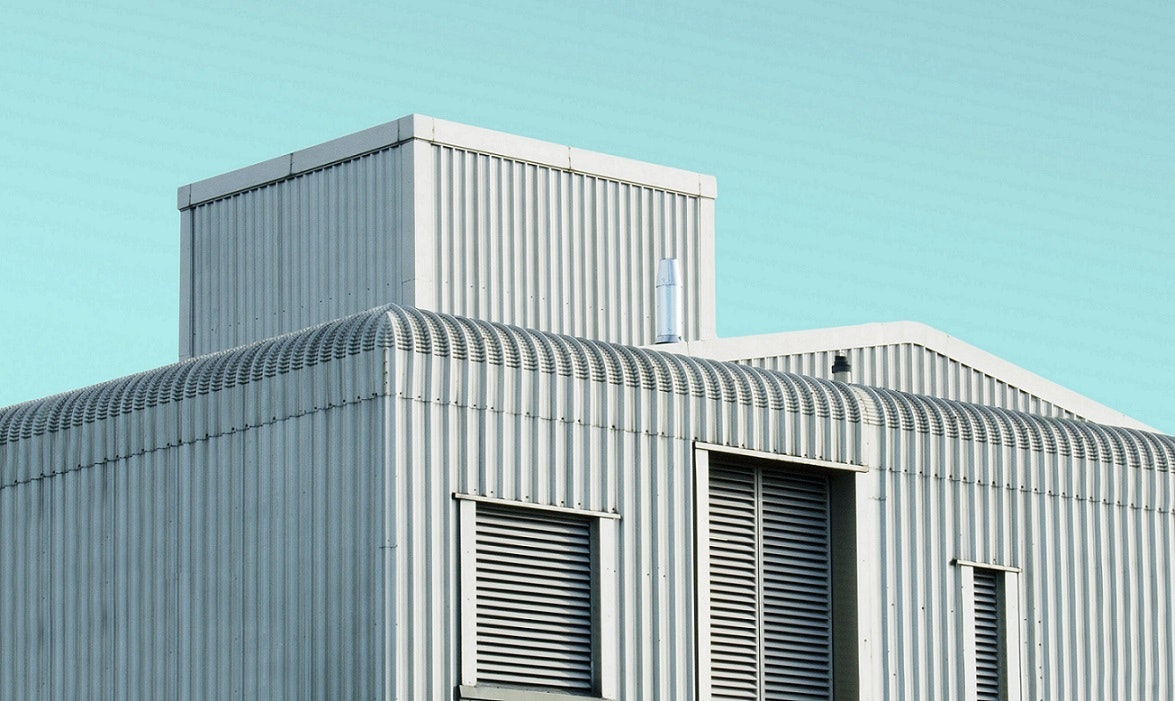
So, if you want your customers to get the best quality products, be sure to research each factory, and read and watch reviews from people online.
Now, Printify does have an internal algorithm that will rate suppliers. But because there were previous production delays due to COVID-19, that algorithm isn't working very well. So, it's best to read reviews and see what other print-on-demand store owners, like me, are saying to find out which ones that we use and like the most.
Places like Monster Digital stayed open and their production delays got quite big, and so their score went down. But the stores, the factories that closed and then re-opened back up again didn't have that impact on their scores, so not fair.
Oberlo on Dropshipping
Jessica: Oh. Yeah, it's not fair. Well, hopefully, that will correct post-COVID-19. With dropshipping, instead of working with factories like print-on-demand, entrepreneurs work with suppliers on AliExpress, which are typically suppliers based in China.
Suppliers are the people and businesses that package and ship products to customers. But just like there's a difference between factories that you mentioned, Sarah, there's also a difference between suppliers and AliExpress. And it's really important that entrepreneurs research, read reviews, message the suppliers, and keep close communication to find the best suppliers to work with.
On AliExpress, you can message a supplier and communicate with them directly by using the message feature in the top left corner. If they get back to you quickly and show consistent processing times with their shipments, you can feel confident in working with them in the future. And if you're not sure about those processing times, order test products and see how those shipments get to you.
This is a huge benefit when it comes to scaling a dropshipping business because if you find a supplier that you like working with, you can negotiate pricing and shipping costs with them in the future.
In other words, if you bring them lots of orders, you can leverage that and get cheaper costs on your product and shipping in the future.
If things don't go so well with the supplier, the good news is that there are lots of suppliers on AliExpress that sell the same product. And that means that you can message each of them to see if they'll maybe lower the price or if they can offer better shipping. While it might be intimidating to do this at first, this is one of the best ways to increase your profit margins.
I think the tricky thing with dropshipping here, when it comes to researching suppliers, is it does take a lot of work. There are suppliers, unfortunately, that will message you and say that they have a local warehouse when they don't. There are suppliers that are just hard to communicate with because of language barriers. And there are suppliers that are consistent one day and then seem to drop off the next week.
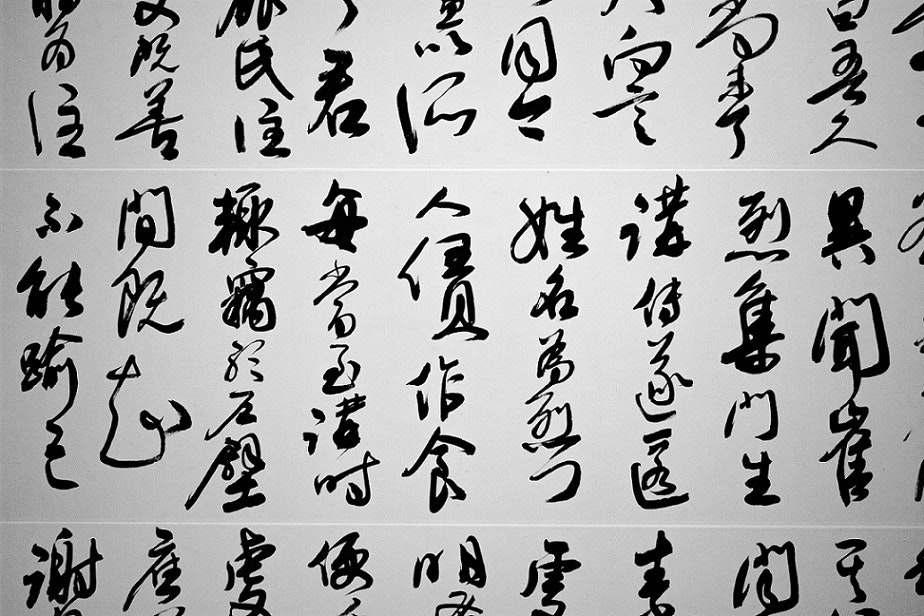
Now, these barriers aren't challenges that an entrepreneur can't overcome. We know plenty of entrepreneurs in dropshipping that do. But this requires extra work that could put off the new entrepreneur.
With all that said, I think, when it comes to finding suppliers for the new entrepreneur, it's a close call, but I think print-on-demand takes this point.
Sarah: Whooo!
Jessica: That means, Sarah, I'm sure we did not see this coming, but it does mean that we have a tie here.
Wholesale Ted 3:3 Oberlo
Sarah: Yeah. But I think it's good because, really, at the end of the day, there is no winner. Because probably one of the most frustrating questions I get with Wholesale Ted is when people say to me, "Sarah, what is the best business to start?"
And I always say to them, "Look, there is no best business, there are just different businesses, and they each have their own pros and they each have their own cons." And so, if the idea of selling completely unique products appeals to you, then definitely look into print-on-demand as an option for your store.
But also keep in mind that you can do both. You don't just have to do one or the other. And that's kind of what I do, and my nickname for that is that you have a flex store.
Jessica: I like that, a flex store. If you can build it, flaunt it. This was a lot of fun. It was a close match, but talking with you actually made me want to start a print-on-demand store, I think, or maybe a flex store.
Sarah: Then I consider this debate between Wholesale Ted and Oberlo a success.
Jessica: Yeah, you should. Well, I'm not gonna shut down my dropshipping store either, though, because like you said, "Hey, why choose?"
Thanks so much again for joining me today, Sarah from Wholesale Ted. Thanks a lot for joining us, everyone. Until next time, happy dropshipping.
Sarah: And happy print-on-demand.
Jessica: Oh, you snuck that in there.
Sarah: I did. Yay.



